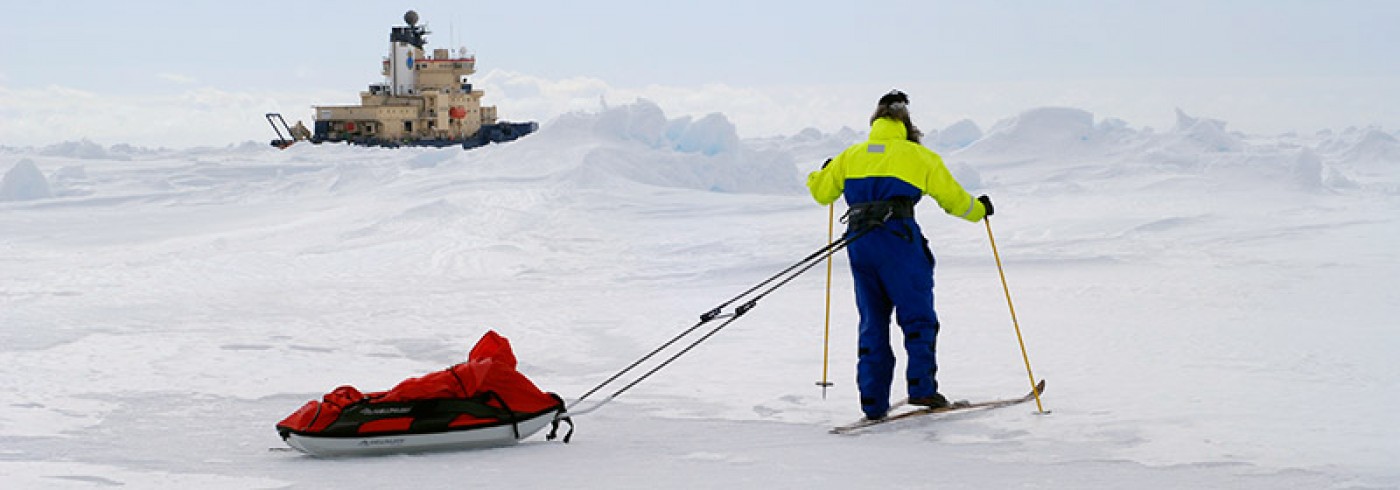Mapping the Amundsen Sea polynya microbiome: patchiness and role in carbon processing
26 November 2010 - 17 January 2011
Peng Yi and Keliang Shi were landed on the sea ice for collection of snow samples. Photo: Patricia L. Yager
Our aim on this expedition was to use iodine isotopes (129I and 127I) and species in the water and air of the Atlantic and Southern oceans as tracers of the rates of ocean water circulation and ocean–atmosphere exchange. We would like to compile the first iodine isotope and species dataset along a transect from the North Sea to offshore from Punta Arenas, Chile, and on into Antarctic seas. This dataset would fill a gap concerning the proper use of these isotopes in modelling global ocean circulation and ocean–atmosphere interactions – a vital issue for climate change parameterization. Our field site stretched from the Swedish west coast, across the Atlantic Ocean, to Punta Arenas, Chile, and on into Antarctic seas.
We used a combination of onboard intake, CDT sampling devices, and column concentration for water sampling. For air and aerosol sampling, we used a denuder system and an air sampler loaded with glass fibre, NaOH/glycerine-impregnated fibre, and TEDA-impregnated active charcoal to collect particles as well as inorganic and organic gas iodine. Ice core samples were also collected.
In total, we collected 479 water and ice samples for iodine speciation. Another 15 and 30 samples were used for Cs and U analysis, respectively. We also collected approximately 300 air samples.







